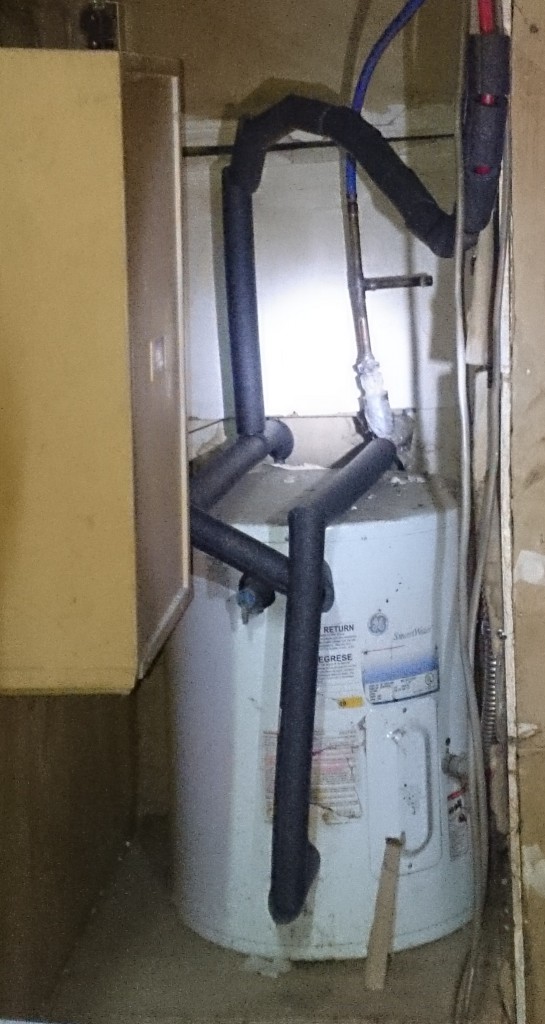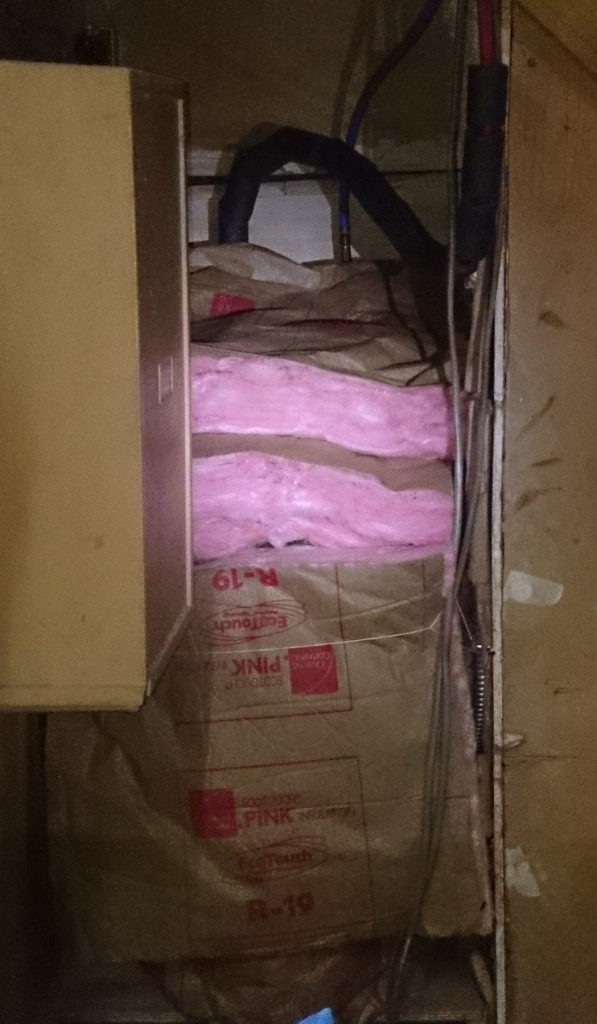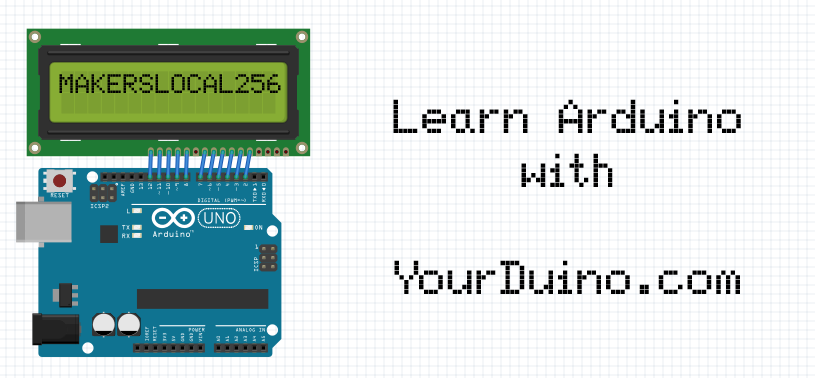Making a Cozy Water Heater
Way back during the summer we hanged insulation in the fab-lab, making it a more consistent temperature and opening up the way to eventually creating another properly air conditioned space at the shop. Once finished, there was still a pretty large amount of insulation strip left over; it was subsequently buried under a table upstairs.
This past weekend it snowed in Alabama, and I more or less intentionally got snowed in at the shop. During the resulting impromptu movie night, I had a chance to discuss just how damn cold it was with other shop members. We eventually landed on a concern that the shop water heater was left running in near-outdoor temperatures 24/7. Recalling the leftover insulation, we shuffled out of the warm office and began wrapping the magic hot water provider in fiberglass insulation.
First up was to apply a few feet of regular pipe insulation to the copper piping. This is mostly a for-the-hell-of-it measure, since we can’t insulate the hot water pipe already installed in the walls.

Next we cut squares from the insulation and placed them around the heater core. The system is located poorly in a too-small alcove, so insulation only fit around four of the six sides of the heater.

Ideally we’d want to create a large blanket around the heater and secure it with twine, but this will hopefully provide us with somewhat better temperature retention anyway.
Next up on the list is installing an electronic timer so that the heater doesn’t spend half of the week creating hot water that no one is around to use.



